Affiliate Disclosure: By clicking through the links on this page and purchasing the products, you’ll be helping me out. This is done because I receive a kickback from the sellers at no extra cost to you! Thank you so much for supporting us!
Weight
8.2 oz / 232g for men’s US9
Stack height
9mm total stack height (3.5mm lugs)
Zero Drop
Made for
Soft ground trails
Shorter distance Barefoot training or experienced barefoot runners
Fit
Medium-Wide Toebox
High volume
True to size
Feel
Very flexible
Maximum ground feel
Great lockdown
Pros & Cons
+ Best Barefoot Trail Feel
+ Great fit + lockdown
– Too deep for some people
The Xero Shoes Mesa Trail II are a perfect upgrade from the original. With a new rubber outsole compound, an upgraded overlay design, and all coming in at a lower weight than the original, Xero Shoes are on to a winner! If they’re the right fit for your foot, I’m 100% convinced this is the trail shoe you’ve been looking for.
As you can tell, I’m excited. But first…
This review will dive into the shoe’s fit, feel, and durability and answer that all-important question, “Is the Mesa Trail II the right shoe for you!” Because we all have individual requirements for a trail shoe.
First and most importantly, the fit.
Xero Shoes tend to fit similarly across most models with minor differences, and I don’t think the Mesa Trail II breaks that trend.
70-80% of the general public will fit in Xero Shoes perfectly; only some will need to look elsewhere for extra toe box width.
Which minimal running shoe is for you?
Take a quick 5-question quiz to identify the perfect minimal running shoe for your feet! You'll get both road and trail options based on your answers!
The Mesa Trail II fits true to size! Xero Shoes sizing varies from model to model, and the original Mesa Trail was no different! But I’m glad to say that the Mesa Trail II fits true to size as they suggest. I’m a men’s US9, and a men’s US9 was perfect in width, depth, and length. A small minority may choose to ½ size up to gain more toe box room.
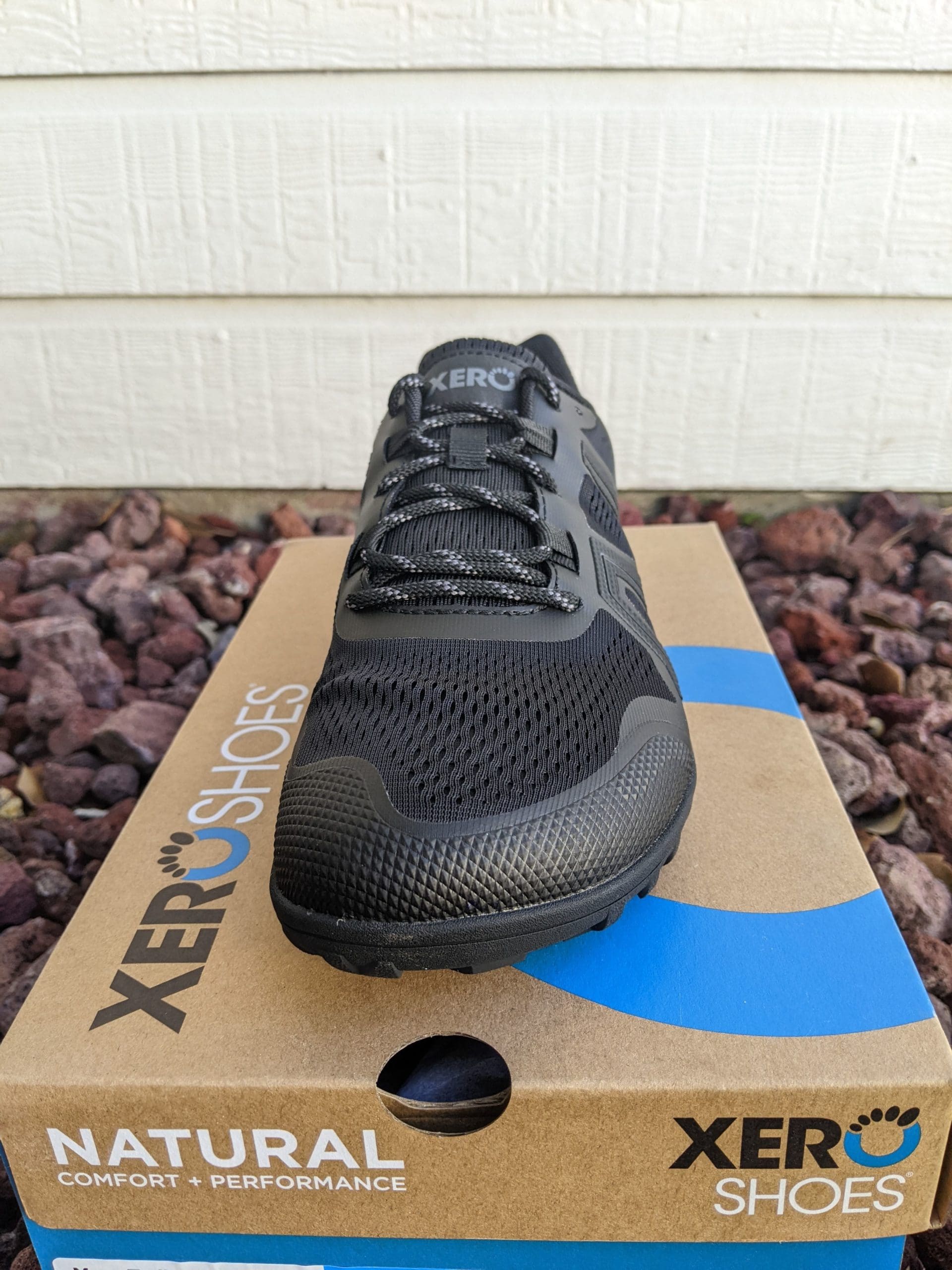
The toe box is wider than conventional brands but could be better for mega-toe spreaders! This is a shape that Xero Shoes are known for. The toe box is wide enough for most. But if you’ve got fan-shaped feet (see picture below), you may want to look at Vivobarefoot instead. As I said before, 70-80% of people will fit perfectly in Xero Shoes. In a perfect world, I’d ask Xero shoes to square off the big toe area, and the toe box would be amazing.

People with a wide toe spread should look at brands like Vivobarefoot, Altra, or Lems instead.
It’s still got Xero Shoes’ depth, and you can gain even more depth by removing the insole. The depth of the Mesa Trail II is a feature I love about the shoe. I have no problem with toes scraping against the top of the toe box, and I don’t feel constricted in the midfoot. Those with shallow feet may need to crank the laces right around, but it’s not extreme with the insoles still in. On the other hand, if you have super deep feet, take the insole out and breathe a sigh of relief!

The flexibility of the ankle cuff adapts to all types of shapes and sizes. One great thing about minimal shoes is that less is more. That means less structure and flexible materials that mold to your foot perfectly. This is specifically true for the ankle and heel cup in the Mesa Trail II. There’s only a minor structure in the overlays to stop the materials from collapsing, which allows the ankle opening to wrap perfectly for a locked-in feel.
A lace lock isn’t required, but the extra eyelets are present for those who need it. The lockdown is already pretty good, with a great heel and unique lace+strap design. But if you’re like me and a fan of the lace lock (marathon loop, runners lock), the second upper eyelet is ideally placed to get that perfect fit.
The lace and strapping system is here to stay! Nearly all Xero Shoes models use the strapping system inspired by the original sandals. Traditional laces loop up the shoe and through straps that run down either side midfoot to help with a perfect fit. The fat laces make it possible to tighten and loosen specific areas to lessen the chances of hot spots.
XeroShoes.com
$119.99
(45-day exchange period)
Oh, I’m excited to talk about this!
The Mesa Trail II is pure joy to run in! And now, with the version 2 upgrades, the experience is even better!
If you know the original version, don’t worry; that minimal feeling is still there, but now you don’t have to dance over sharp rocks as much.
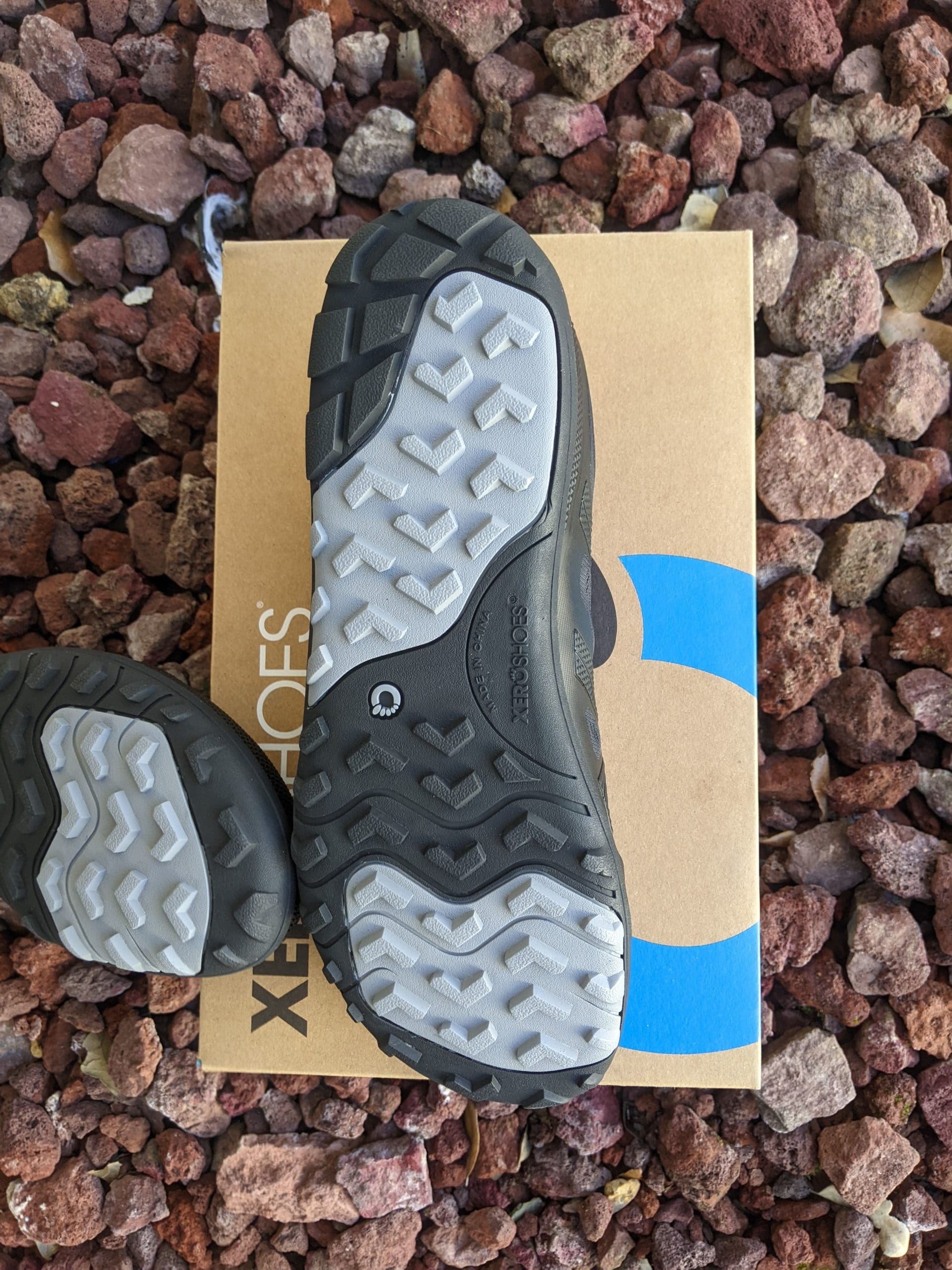
A perfect balance between ground feel and rock protection. If there were one letdown of the original Mesa Trail, it’d be the performance on rocky downhill trails. I loved all that ground feel, but it only worked on buffed-out trails. Whenever I hit a rocky downhill, I’d have to slow down and go super careful.
The Mesa Trail II has fixed this!
Either the rubber compound has changed, or there’s just a little more rubber underfoot. With very little ground feel lost, the upgrade has opened up the ability to run faster and safer on descents! I’m so confident in the upgrade that I’m seriously considering using the Mesa Trail II for the super tricky and technical Andorra trail 50km.
The outsole bends in all different directions. When running barefoot, your foot doesn’t just bend at the toes. It articulates in many different directions. Front to back, side to side, and torsionally like a screw. Some minimal shoe manufacturers forget this fact and only build flexibility into a shoe at the ball of the foot. That’s not true for the Mesa Trail II. Thanks to the minimal upper and flexible outsole, your foot can move in every direction yet still maintains adequate underfoot protection.

The new upper overlays are strong enough to lock the foot in place and flexible enough to allow proper foot function. In the old Mesa Trail, the upper was soft and somewhat floppy. That’s great for barefoot mechanics but not great for lateral movement. When jumping from side to side, or rock to rock in this case, some structure is good to stop your foot from sliding off the side of the shoe. Again, it’s all a balance; the Mesa Trail II has found that perfect balance. You’re locked onto the sole but still have great flexibility for your foot to function.
The upper is breathable and perfect for the summer months. The material covering the toe box and in between the overlays is a very thin mesh allowing your foot to breathe on those hot, sweaty days. It also presents the added bonus of being able to dry out if you have any water crossing during your run. The one situation I’d say they might not work is in the muddy wet hills of the UK in the winter. You’ll end up with very wet, cold feet, but there’s not much in the barefoot world that solves that issue.
The outsole lugs are aggressive and bi-directional! Perfect for up and downhill. Measuring at around 4mm, the evenly spread lugs on the Mesa Trail II just work. I’ve been testing the shoes in the snow, mud, and wet, and they have the best grip I’ve felt for a long while. Having some lugs facing forward and others facing backward is a detail that works amazingly, allowing for greater confidence on the downhills.
XeroShoes.com
$119.99
(45-day exchange period)
Again, I think we’re looking at another win here.
The two biggest letdowns for the original Mesa Trail were the outsole and the upper materials at the ball of the foot. These broke down first for me, although I was on 800km for my second pair, and they still had life in them.
The outsole feels like a tougher compound than the previous Mesa Trail. To me, that means I’m expecting more than 800km! And considering Xero Shoes has their 5000-mile outsole guarantee, they project much more than 800km. Although the lugs may wear prematurely because they are aggressive, I think we’ll see outsole lifespans that far exceed the shoe industry here.
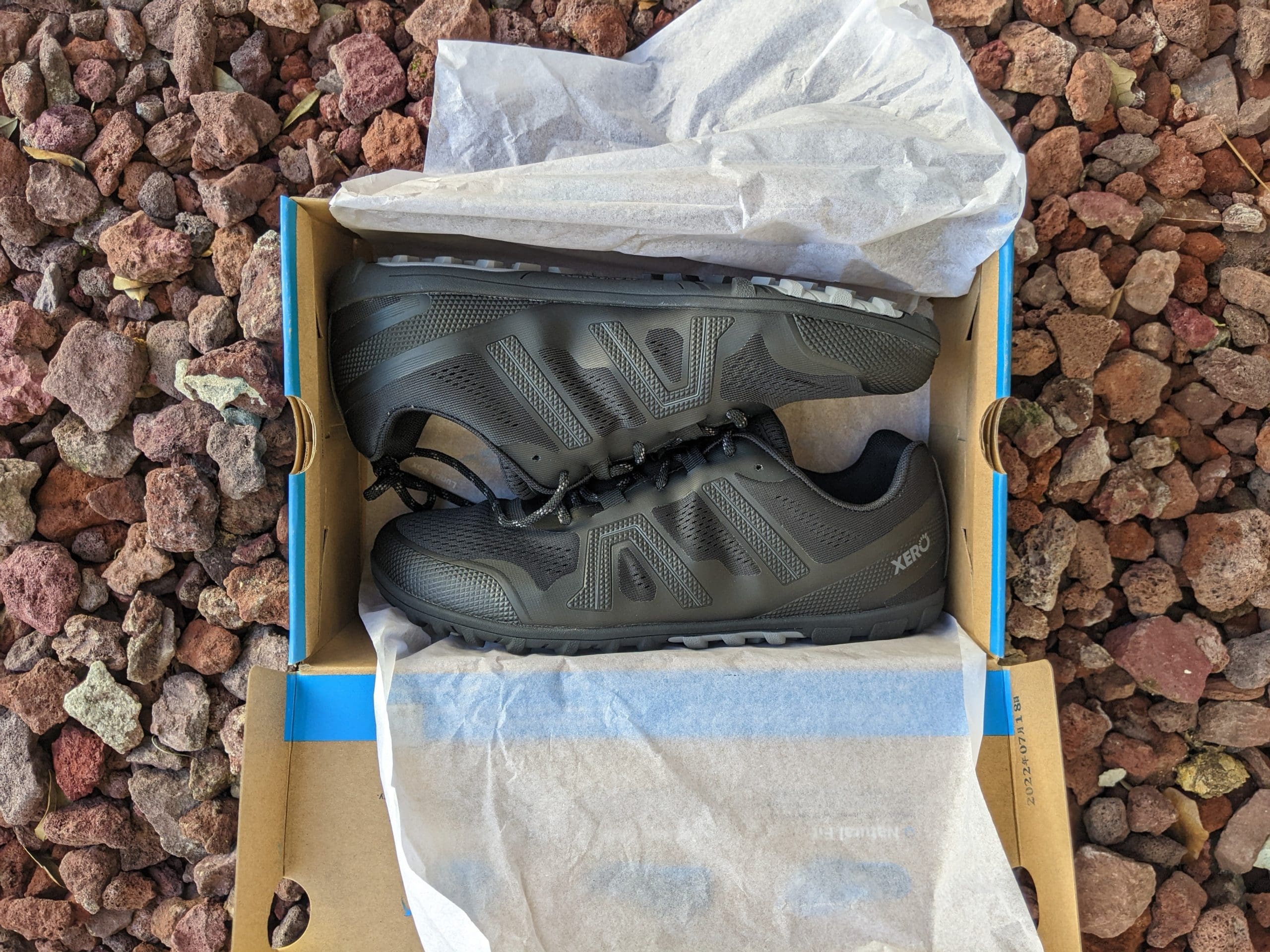
We have welded overlays all around the base of the shoe! As I said, I busted out the side of my original Mesa Trails because the upper material joined directly onto the sole at the crease point of the shoe. This time, the Mesa Trail II has gone for overlay all around the shoe, so those weak points are reinforced. What’s more impressive is that this hasn’t affected the weight!
The toe box isn’t rigid but protects from minor scrapes and scuffs. Some toe boxes are solid. And if you often kick rocks hard, then it’s nice to have that extra protection. But those occasions are few and far between. Here we have a compromise where the toe box is semi-rigid, helping the shoe keep its shape and offering a little protection for you and the shoe.
The tongue is glued in and single-stitched in one section. If you find tongues tend to slip around when you run, there’s a potential you could see wear at the attachment points of the tongue. Because there’s no gusset, meaning it’s not stitched up the sides of the tongue, we rely on glue and a single stitch to keep the tongue fastened into the shoe. I’d suggest not tugging on the tongue when pulling the shoe on. I think this is a nitpick from me, I don’t expect it’ll break, but judging by the rest of the shoe construction, this is likely the weakest part.
I’m gonna say it.
I love this shoe. So I’m pretty biased in this review. But that’s the point, eh!
When a shoe is good, I’m gonna shout about it!
All remains to see if this shoe can go the distance. So if the Mesa Trail II gets to 1000km, I won’t stop talking about it.
What does this review mean for you? Should you buy it?
- If you have an average-width foot without a huge toe splay
- If you’re looking for a minimal trail with just the right amount of protection
- If you want a minimal trail shoe with grip
But …….
- If you have a wide-toe splay
- Try a Vivobarefoot Primus Trail instead.
- If your feet aren’t conditioned to minimal shoes and rocks on trails.
- Try an Altra Superior first, and work down to a minimal trail shoe.
- If you’re going to run on roads too
- Try the Xero Shoes HFS for a similar shape and feel.
XeroShoes.com
$119.99
(45-day exchange period)
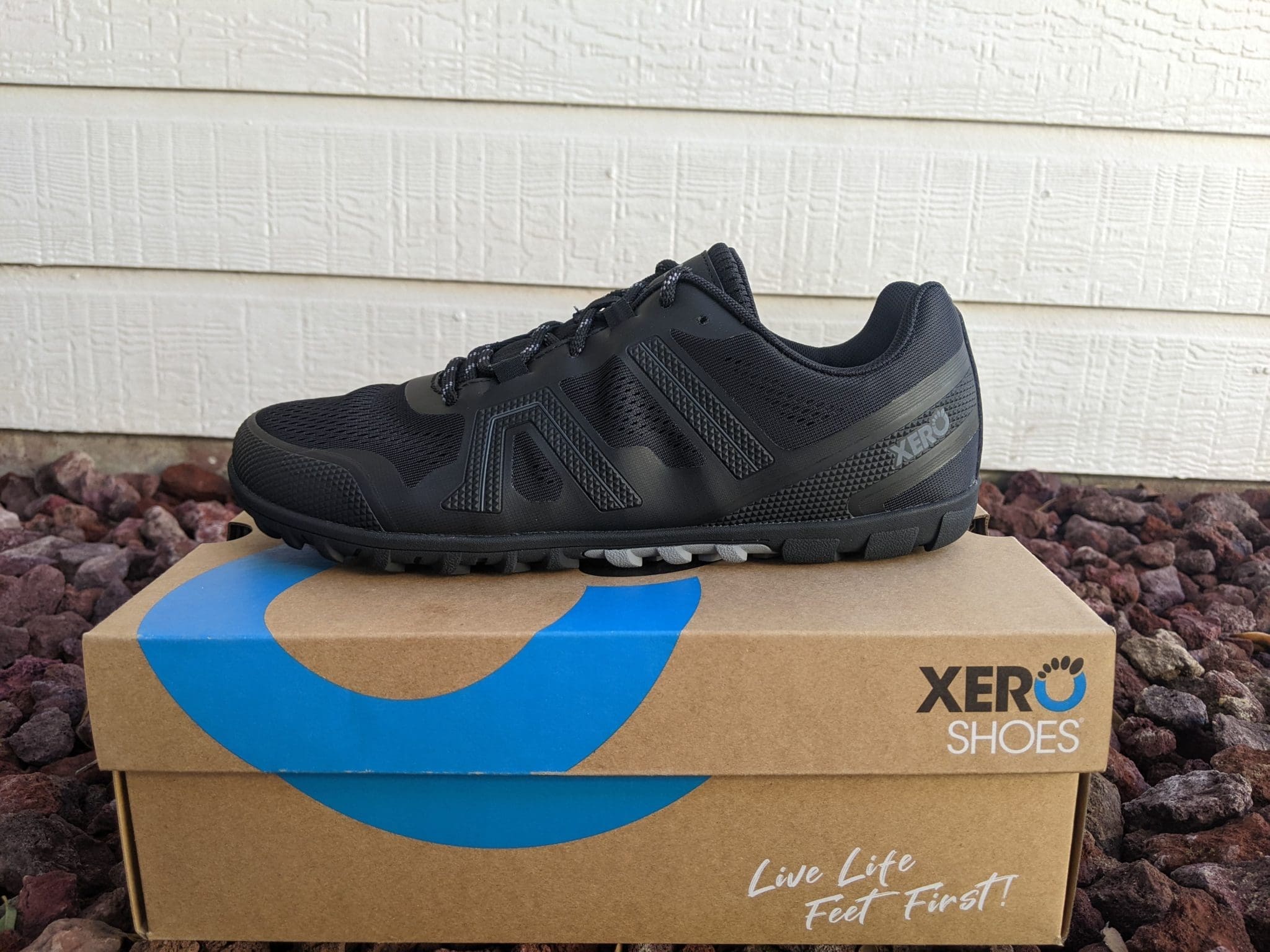

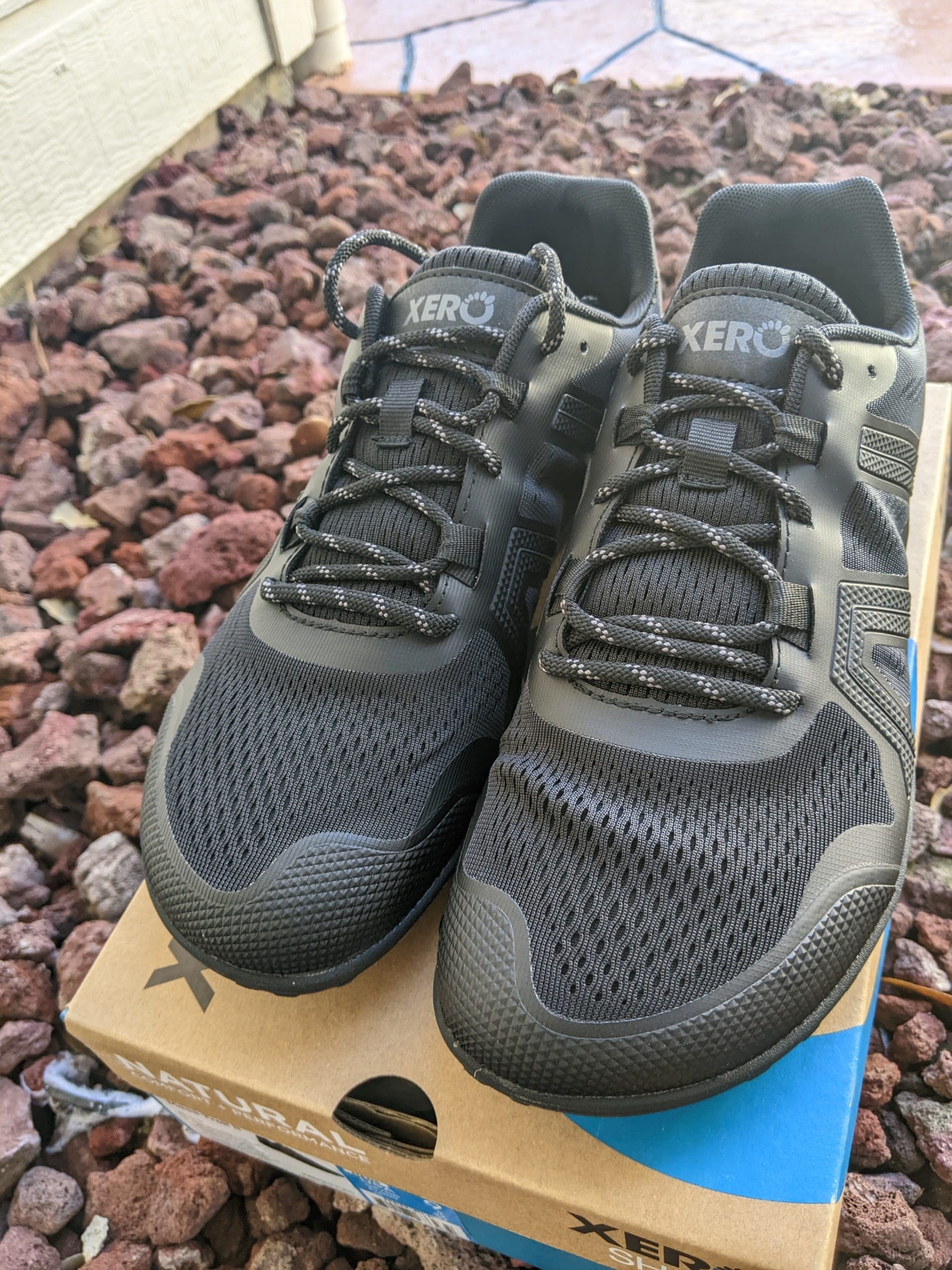
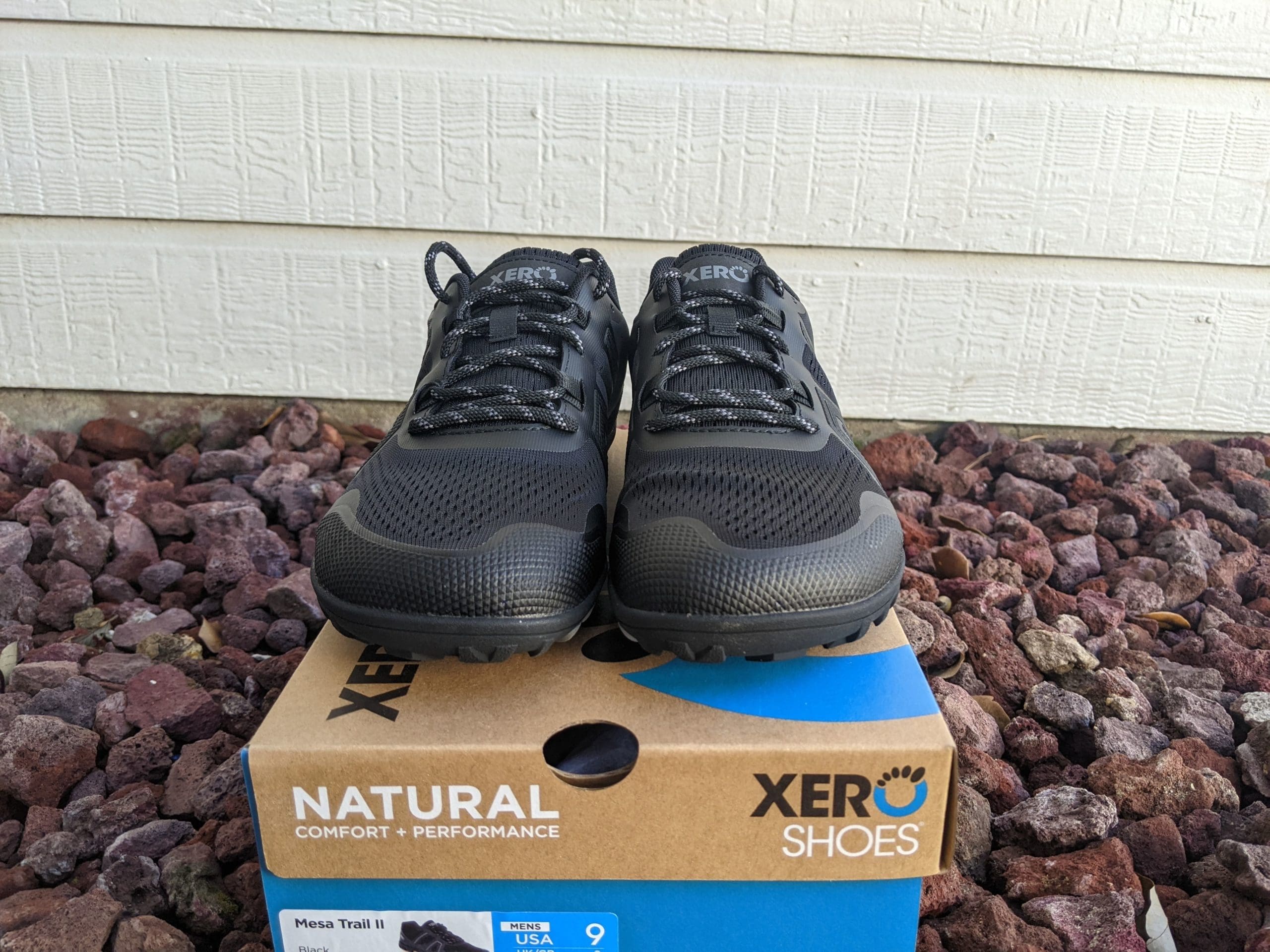

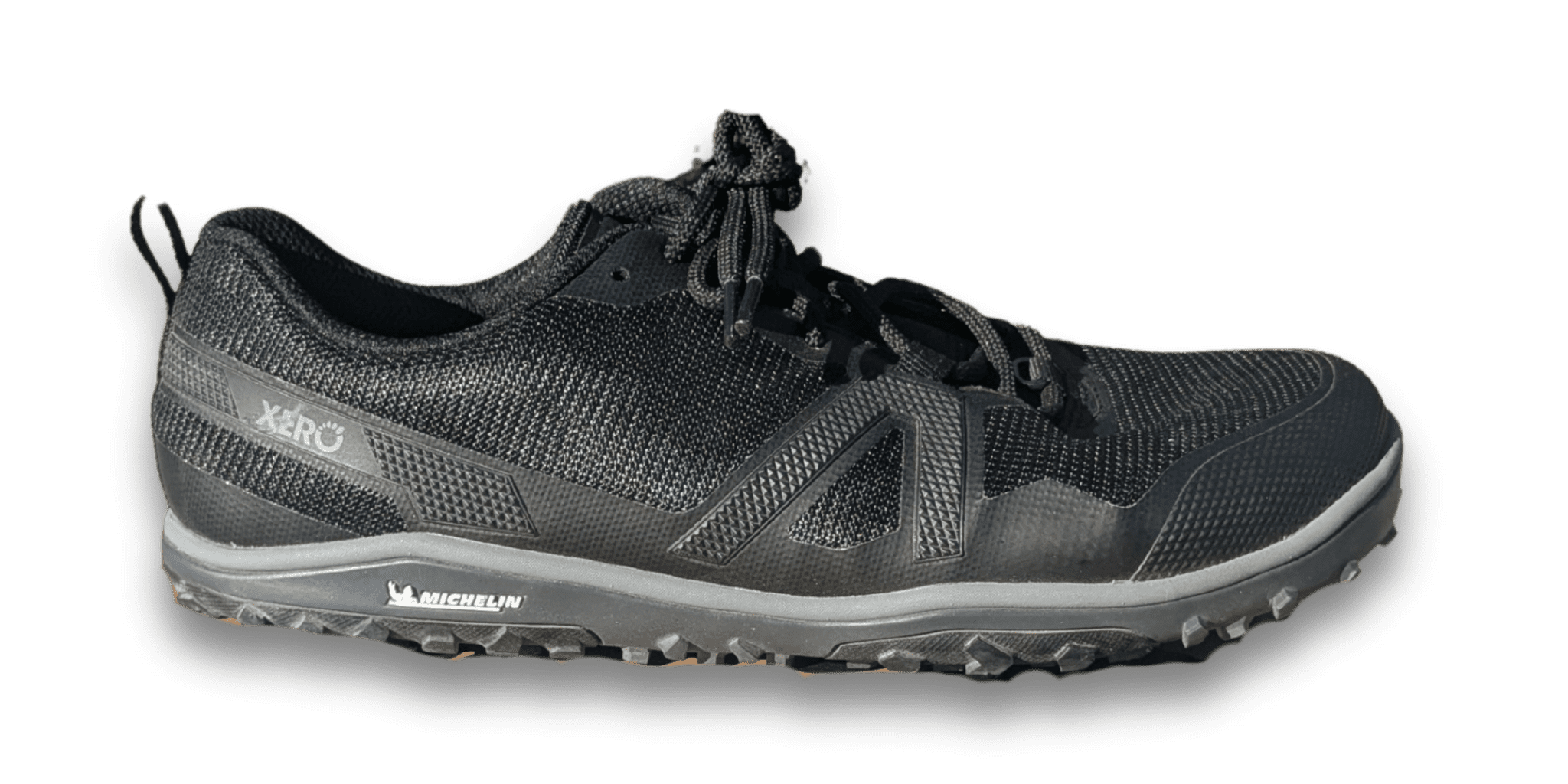
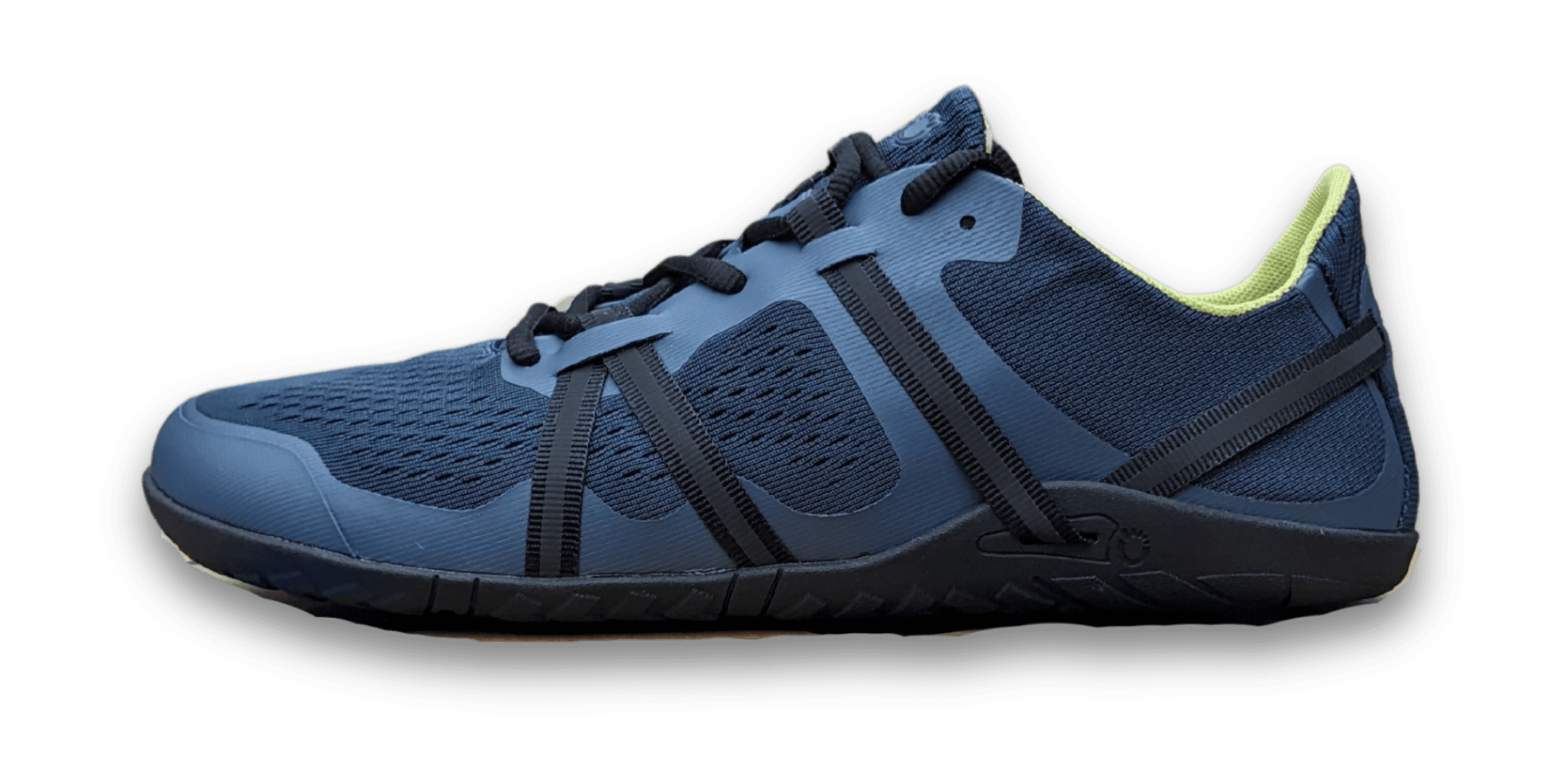
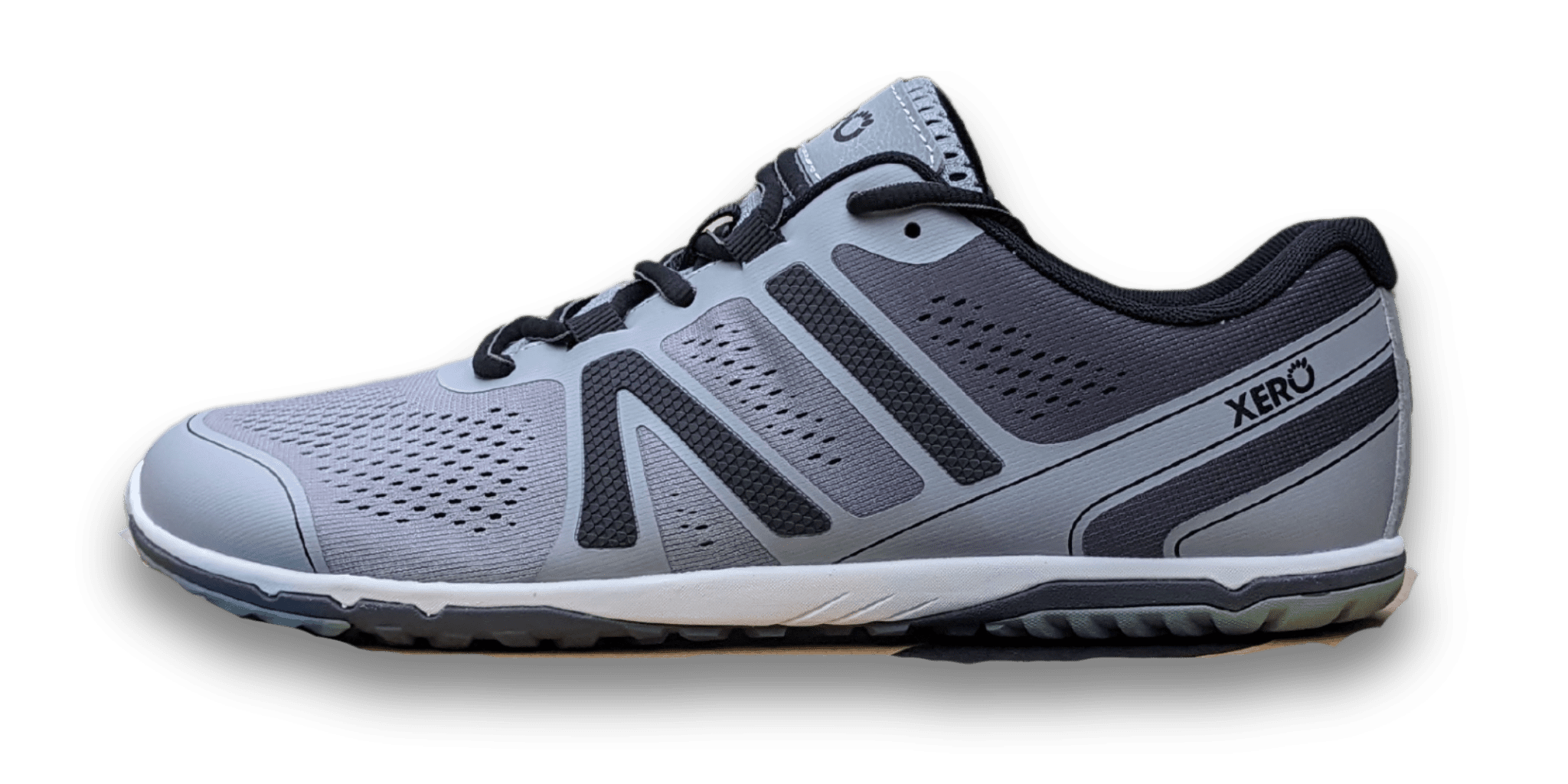

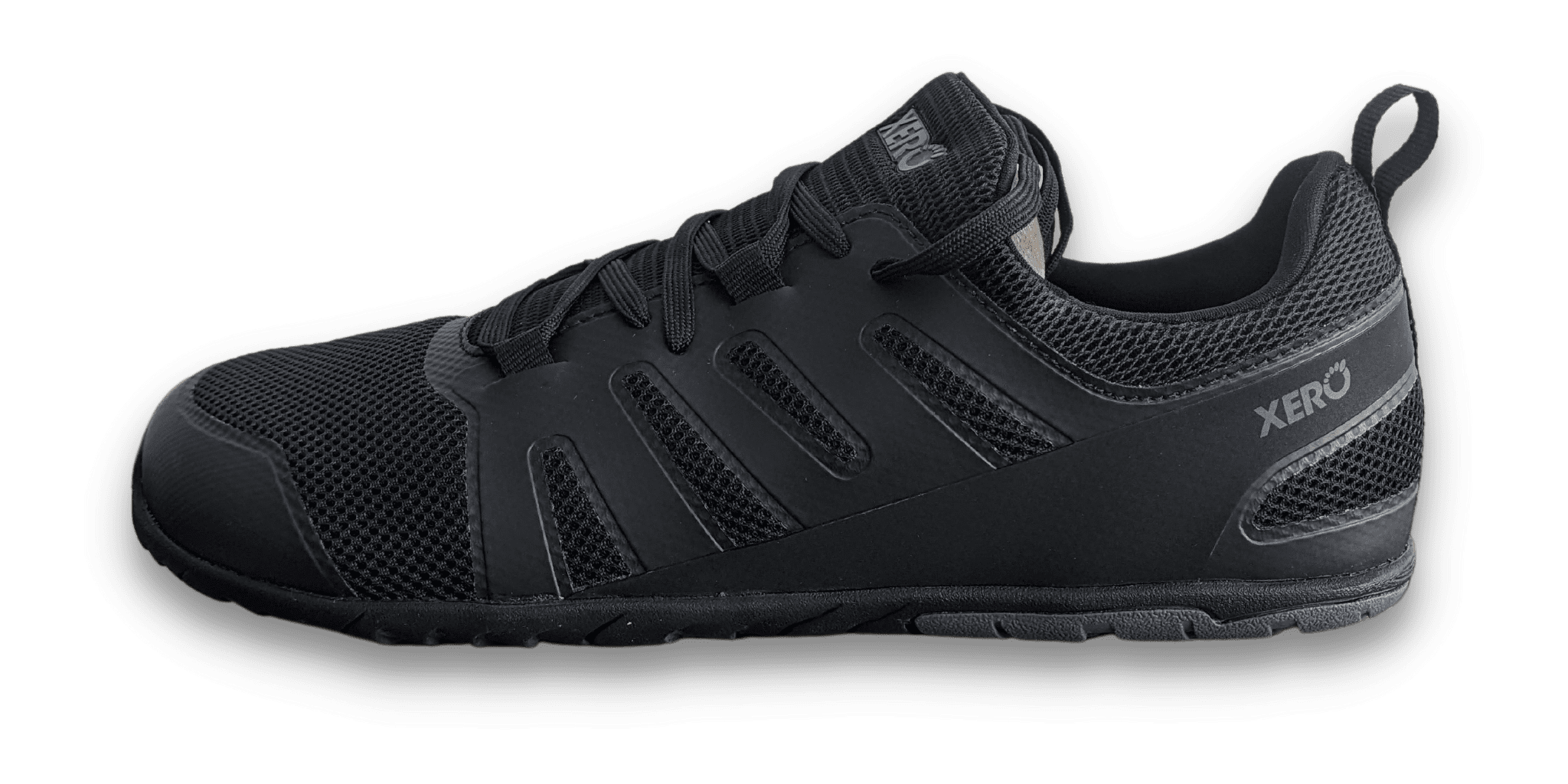
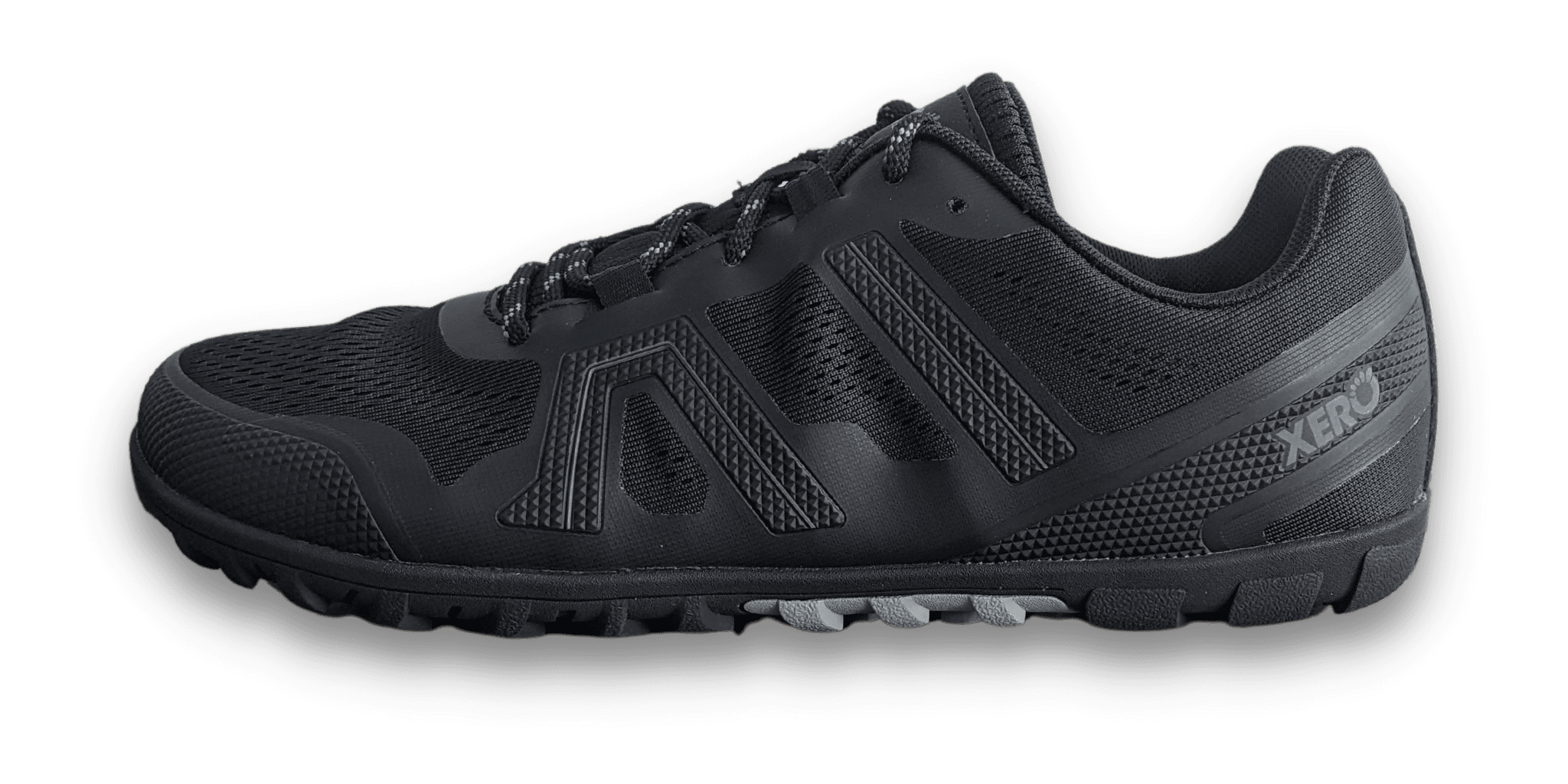
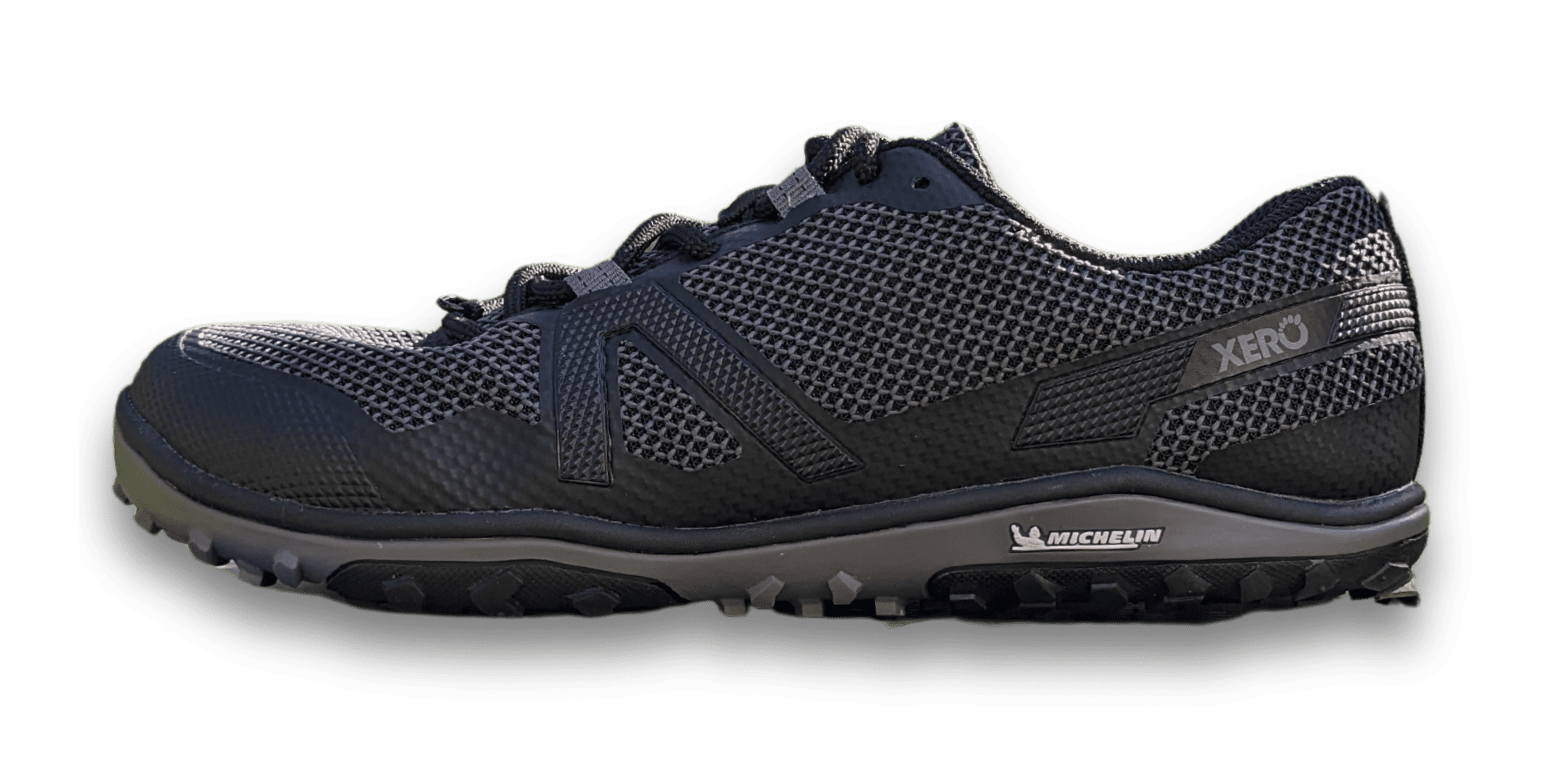

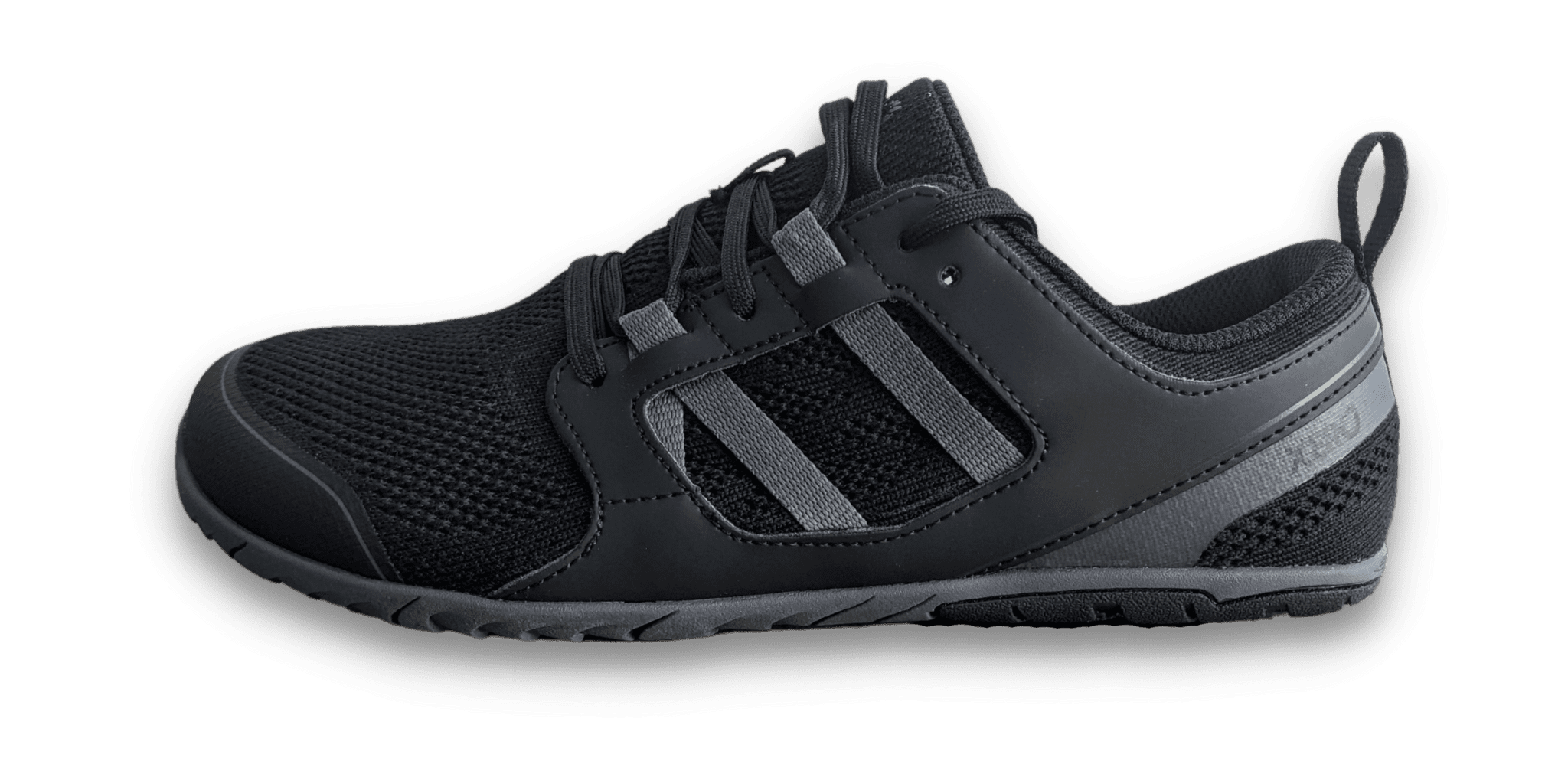
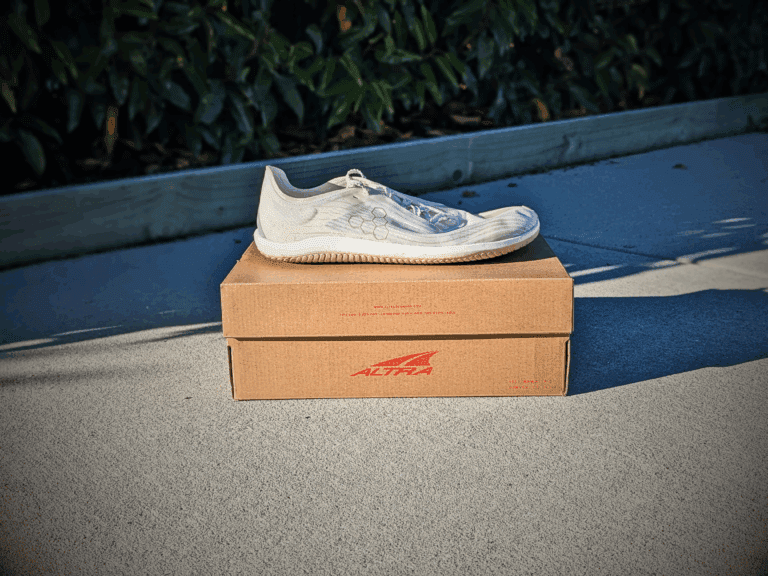


Hello! Really really good review. I need these shoes now haha but can I ask you how long your feet are in centimeter?
I hate ordering the wrong size.
My feet are 25,5 cm and I have prios in US 8,5 which ended up small.
It would really help me out a lot.
Thanks!
Hey! Thanks for the kind words!
My feet are 26.5cm long, and I’m using a US9 in the Mesa Trail II. But length is not the only factor here, it will depend your toe shape and splay too. I explain all this in https://barefootrunreview.com/the-best-xero-shoes-road-running-shoe-2023/.
To be honest, I assumed US8.5 Prios would fit you well if your length is 25.5cm, so I think there’s something else going on, or your under measuring.
What shoes did you wear in the past? And what size did you take?
Thanks!
Hi! I’m so glad to read this review AFTER having just bought the shoes! I’m holidaying in Hokkaido and just destroyed a pair of Altras which lasted less than 300 kms, as all the Vivobarefoot did. I always end up trashing shoes because they break down on the inner side next to the ball of the feet. I really hope these Xeros will last longer and will be as comfortable as I found them in the shop!
I hope you love them as much as me!
The inner is holding up, the sole started to fall apart after a two-day hike (38km / 3100m elevation gain). It’s definitely not going to last any longer than 100 miles. Got in touch with Xero, in the end they reluctantly gave me the chanche to “benefit” from their 5000-mile sole warranty. Since, because of two-way shipping costs, this is going to cost me more than what I paid for the shoes, I turned their offer down and purchased another brand I am familiar with.
That’s disappointing and I’m surprised. I’m on 500km with mine, and I did a 50km race in them and I’m still running in them!
I’d love to see where they broke down, so if you’re willing to, could you send the photos to hello@barefootrunreview.com. What type of trails were you walking on, is there anything you can think of which is unique that could help others decide if the outsole may not work for them. Thanks!
The Mesa I is my go-to shoe in W10, but I am finding the fit on the Mesa II to have more toe-box room and flexibility (around the first two toes particularly) and it concerns me – I feel like I should size down to a W9.5. Hmm.
If it helps, I wear 1 FULL size small in the Mesa Trail II compared with the Mesa Trail I.
But the Mesa Trail I was just a tiny bit long for me, so in the Mesa Trail II I’d suggest 1/2 size smaller than the Mesa Trail I.
I hope that helps?